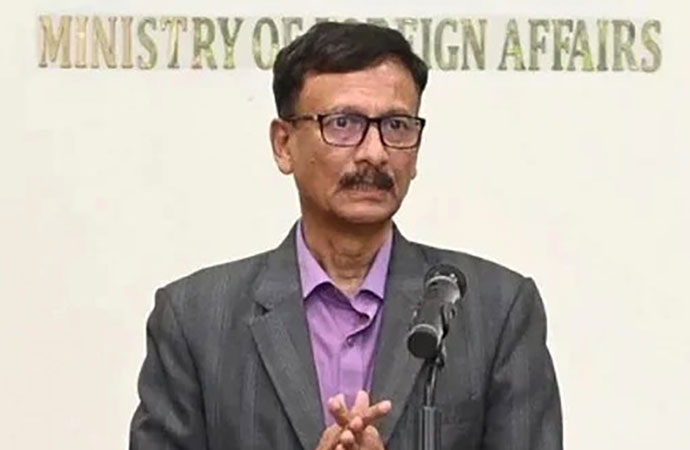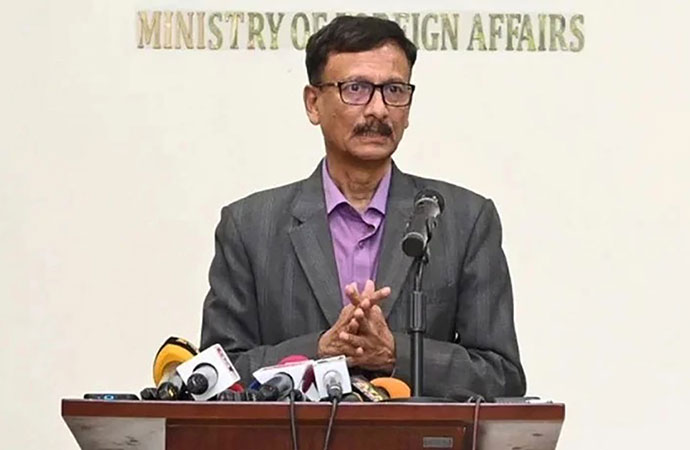Featured 1

Photo: Collected
It's been a volatile week in South Asia, with matters coming to a head for the political dispensation in two countries, Sri Lanka and Pakistan. Understandably this has caused the discourse throughout the region to pause and reflect, and even engage in parlour games as to who might be next. But we need to make it clear that there are very particular reasons behind the problems we see our Sri Lankan and Pakistani friends grappling with today that actually mark them as unique, and the risk of contagion, while tempting to consider, is not really as pronounced as some would like to think.
Pakistan's problems in particular, stem from historic issues that have prevented democratic consolidation from ever really taking place in the country, in the face of the powerful institution represented by the country's army. No prime minister has ever completed his or her full term in the country, and it is now all but certain that Imran Khan will not be the first. A vote of confidence that he has fought hard to avert will now go ahead over the weekend, and by all accounts, he is set to lose it. What comes after that is much less certain.
Sri Lanka on the other hand, is burdened with an economic crisis that has been exacerbated throughout the period of the pandemic for the country's tourism-dependent island economy. During the course of it, even Bangladesh has been called upon to lend a hand to keep the country going, to which we responded positively last year with a currency swap, but clearly the issues go far deeper and much more help than we are able to provide is needed. Colombo is now seeking financial support from the IMF and turning to regional powers that may be able to help.
During an address last month, President Gothabaya Rajapaksa said he had weighed the pros and cons of working with the IMF and had decided to pursue a bailout from the Washington-based institution -- something his government had been reluctant to do.
Sri Lanka has also requested help from China and India, with New Delhi already issuing a credit line of $1 billion in March -- but some analysts warned that this assistance might prolong the crisis rather than solve it. There is still much uncertainty around what comes next; national consumer price inflation has almost tripled, from 6.2% in September to 17.5% in February, according to the country's central bank. And Sri Lanka has to repay about $4 billion in debt over the rest of this year, including a $1 billion international sovereign bond that matures in July.
Critics say the roots of the crisis, the worst in several decades, lie in economic mismanagement by successive governments that created and sustained a twin deficit - a budget shortfall alongside a current account deficit. "Sri Lanka is a classic twin deficits economy," said a 2019 Asian Development Bank working paper. "Twin deficits signal that a country's national expenditure exceeds its national income, and that its production of tradable goods and services is inadequate."
With the country's lucrative tourism industry and foreign workers' remittances sapped by the pandemic, credit ratings agencies moved to downgrade Sri Lanka and effectively locked it out of international capital markets. In turn, Sri Lanka's debt management programme, which depended on accessing those markets, derailed and foreign exchange reserves plummeted by almost 70 percent in two years. The Rajapaksa government's decision to ban all chemical fertilisers in 2021, a move that was later reversed, also hit the country's farm sector and triggered a drop in the critical rice crop. If there are lessons to be learned for others in the region, that would be the extent of it.

























Leave a Comment
Recent Posts
Remembering Kalidas Karmakar ( ...
The art world remembers Kalidas Karmakar, a visionary whose creativity ...
An Evening with Shishir Bhatta ...
Cosmos Art Echo, the artist talk initiative of Gallery Cosmos and Cosm ...
Myanmar denies genocide, calls Rohingya crackdown co ..
Yes, of course
Earth’s average temperature last year hovered among ..
Bangladesh and Singapore: A Tale of Two Nations